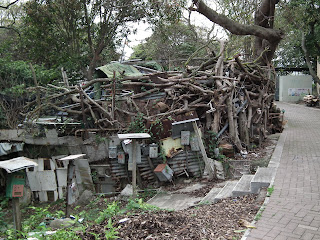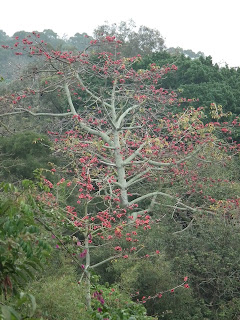






I normally live in Michigan. Almost every Michigander has visited Mackinac Island that sits just east of the Mackinac Bridge in the straits the connect Lake Michigan and Lake Huron. Mackinac Island was an important cultural cross-road in the history of the Great Lakes region of North America. It was a Native American-French/Western meeting point around the economic activity of the fur trade. Today it is a tourist spot, but no motorized vehicles are allowed, so horse and buggy and bikes are the mainstay for transportation once you arrive on the ferry.
Recently I visited Cheung Chau Island which is one of the many islands that is part of Hong Kong. Like Mackinac Island, it has no cars, and it also played an important role in cross-cultural contacts between Europeans and Chinese.
Most people know of Cheung Chau Island from its famous Bun Festival which draws thousands of people, usually in early May. The most popular story around the development of the festival relates to the island being spared the devastation of the plague. Thus the festival celebrates the deity's protection of the island.
The event that draws the crowds is the bun-snatching event. A tower of buns is constructed and young men race up the tower putting buns in their bags. while we were there, the bun tower was being constructed for the upcoming festival. Much of this has Daoist origins.


But Cheung Chau has other aspects to its history. Early European missionaries were not allowed to set foot on Chinese territory, but Cheung Chau Island was just far enough away to allow missionaries to use it as an outpost for their incursions into China. It also drew pirates for the same reason. One of the major missionary groups involved in China were the Christian Missionary Alliance. I grew up hearing about Hudson Taylor and his early missionary work in China! The Chinese friend who took us there was the wife of a Christian Missionary Alliance pastor. The Alliance seminary and college is located here as a reflection of this history of Cheung Chau. And staff of the Worship Institute at Calvin College where I teach have been there for conferences! There is also a strong Catholic presence with a Catholic retreat center there. But finally, there is also a Buddhist high school, representing yet another cultural influence.
We had a wonderful walk through these cultural spaces, all co-existing in the small space of the island. Roads that looked like highways on the map turned out to be mere walking paths the wound through the island highlands with narrow streets branching off.
The final cultural artifact was a village called the Care Village. It was built as the result of Canadian and US funds in the late 1960s. It also illustrated the contrasts between some very expensive homes and shacks made from sticks. In the midst of it all there was also an artist colony.



























No comments:
Post a Comment